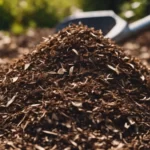Acorn squash, a variety of winter squash, is a delightful and versatile ingredient in the culinary world. Known for its distinct shape, resembling an acorn, this squash is not just a fall decoration but a staple in many kitchens. In this article, we delve into the unique taste of acorn squash, exploring its flavor profile and culinary applications, to inspire both seasoned cooks and culinary newcomers.
Physical Description of Acorn Squash
Acorn squash is easily recognizable by its ridged, acorn-like shape and typically comes in a deep green color, often with a splash of orange. Some varieties, however, can range from orange to a pale yellow hue. The outer skin is hard and thick, making it excellent for storage, while the inside reveals a tender, orange flesh. This variation in color is more than just aesthetic; it can often be an indicator of flavor nuances, with deeper colored squashes generally offering a richer taste.
Flavor Profile of Acorn Squash
The primary taste of acorn squash is mildly sweet with a distinct nuttiness, setting it apart from its winter squash counterparts. This sweetness is not as pronounced as in butternut squash but is more subtle and earthy. The flavor can vary depending on the level of ripeness and the specific variety, with some tasting slightly buttery and others having a more peppery undertone.
Cooking methods also significantly impact the flavor of acorn squash. Roasting, for instance, tends to enhance its natural sweetness and nuttiness, while boiling or steaming might result in a more subdued flavor profile. The method of preparation and the degree of caramelization can turn the same squash into a variety of taste experiences.
Culinary Uses of Acorn Squash
Acorn squash is highly esteemed in the culinary world for its versatility. It can be baked, roasted, steamed, sautéed, or even microwaved. A classic preparation is to halve the squash, remove the seeds, and bake it with a filling, often a mix of butter and brown sugar or maple syrup, which complements its natural sweetness. It’s also commonly stuffed with a variety of fillings ranging from grains like quinoa or rice to meats or cheeses.
Beyond these traditional methods, acorn squash can be incorporated into soups, pureed for sauces, or used as an edible serving bowl for savory dishes. Its subtle flavor makes it a great canvas for a wide array of spices and ingredients, allowing it to fit into diverse cuisines, from sweet to savory dishes.
Texture and Consistency
When cooked, acorn squash has a tender, yet somewhat fibrous texture. It’s softer and creamier than some other winter squashes, which makes it particularly pleasant in purees or soups. The skin, although edible, is often removed before eating due to its tough texture.
The cooking method chosen can significantly alter the texture of acorn squash. Roasting or baking concentrates the flavors and brings out a firmer texture, ideal for dishes where it’s important for the squash to hold its shape. Steaming or boiling yields a softer, more delicate texture, perfect for mashing or blending into a smooth consistency.
Enhancing the Flavor of Acorn Squash
Selecting the best acorn squash is key to ensuring the best flavor in your dishes. Look for squash that feels heavy for its size with a dull, matte skin, and no soft spots. The stem should be intact, which helps in preserving the squash’s freshness.
To complement and enhance the natural flavor of acorn squash, a variety of seasonings can be used. Spices like cinnamon, nutmeg, and ginger pair well with its sweetness, while savory options like thyme, sage, or garlic can bring out its earthier notes. Drizzling with olive oil, butter, or maple syrup before roasting can also help to caramelize the flesh, adding a depth of flavor.
Conclusion
Acorn squash is a culinary gem, offering a blend of sweet and nutty flavors that can enhance a wide range of dishes. Its versatility in the kitchen makes it a favorite among cooks and food enthusiasts. Whether it’s roasted to bring out its natural sugars, blended into a creamy soup, or used as a vessel for a savory stuffing, acorn squash can adapt to various cooking styles and preferences.
The key to unlocking the full potential of acorn squash lies in experimentation. By trying different cooking methods and seasonings, you can discover the many ways this squash can delight the palate. Its compatibility with both sweet and savory ingredients makes it a valuable addition to your culinary repertoire, especially during the fall and winter months.
Acorn squash is not just a treat for the taste buds; it’s also a nutritional powerhouse, rich in vitamins, minerals, and fiber. Incorporating it into your meals not only adds flavor but also contributes to a healthy diet.
We encourage you to explore the subtle, earthy sweetness and rich texture of acorn squash in your cooking. Its versatility, nutritional value, and delightful taste make it a worthy ingredient to experiment with and enjoy in various culinary creations. Whether you are a seasoned chef or a home cook, acorn squash offers endless possibilities to enhance your meals and bring a touch of autumnal warmth to your table.



